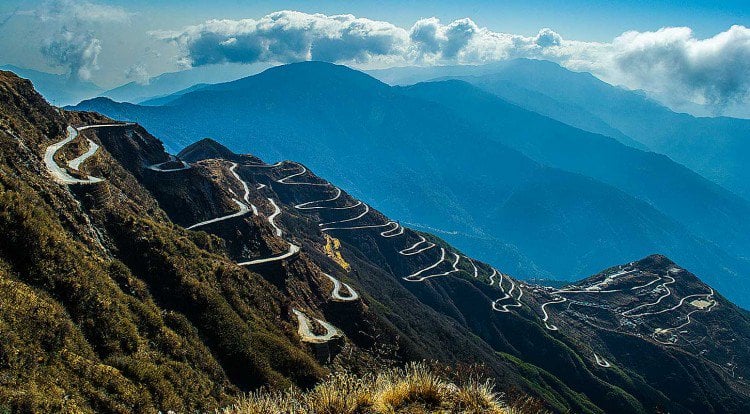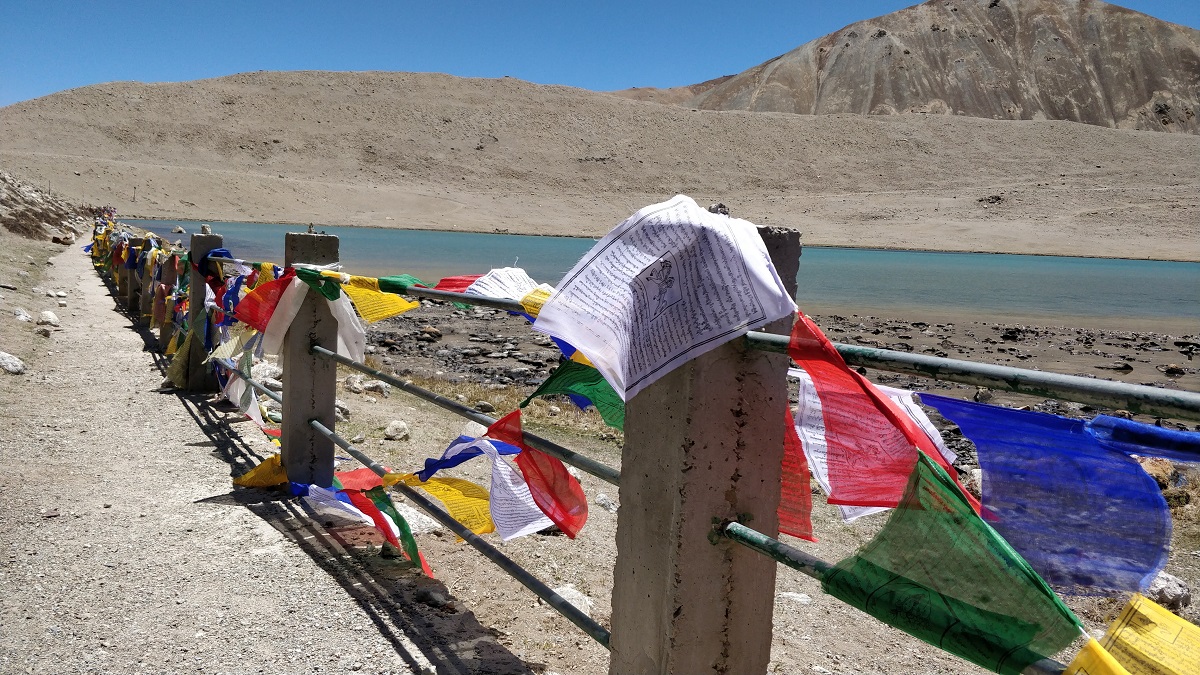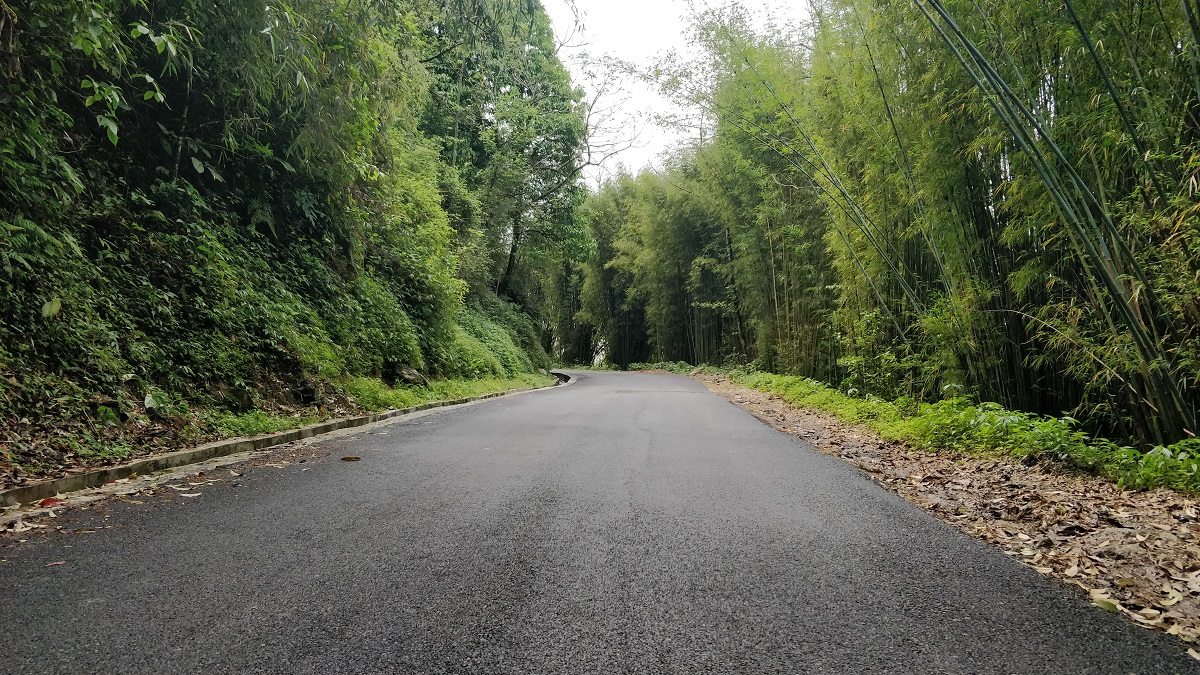4 Nights 5 Days - Gangtok Sikkim Tour Package
Details
Inclusions
Safe Travel
Flexible Cancellation
Easy EMI
Certified Captains
24/7 Support
Overview
Embark on a journey to the enchanting land of Sikkim with our 4 Nights 5 Days Gangtok Package which is a perfect mix of nature, culture, and adventure. Tucked between Nepal and Bhutan, Sikkim may be one of India’s smallest states, but it’s brimming with scenic beauty, mystical mountains, and serene valleys. This well-planned itinerary lets you soak in the best of what this Himalayan gem has to offer, making it an ideal summer getaway.
Your Gangtok itinerary for 5 days begins in the charming capital city of Gangtok. Located at an altitude of 5,413 ft in the Eastern Himalayas, Gangtok is known for its cleanliness, vibrant streets, and breathtaking views. The city's heart-M.G. Road is a pedestrian-only open-air mall lined with cozy cafes, local shops, and lively restaurants. It’s the perfect place to take a relaxed stroll and get a taste of the local culture.
Over the next few days, your Gangtok tour plan for 5 days will take you through a variety of unforgettable experiences. You’ll visit the stunning Tsomgo Lake, also known as Changu Lake, located about 40 km from Gangtok in East Sikkim. This glacial lake, perched at 3,753 meters, remains frozen for most of the year and offers a surreal view that feels like something out of a dream. It’s one of the highest glacial lakes in the world and a must-see when exploring Sikkim.
Another incredible highlight of this journey is Nathula Pass. Located at 4,310 meters, it’s one of the highest motorable mountain passes in the world and a place of great historical and strategic importance. Nathula, derived from the Tibetan words ‘Nathu’ meaning “Listening Ears” and ‘La’ meaning “Pass,” connects India with the Tibetan Autonomous Region of China and once formed part of the ancient Silk Route.
Back in Gangtok, you’ll explore a range of attractions that highlight the city’s rich heritage and natural charm. The Rumtek Monastery offers a peaceful retreat, known not only for its spiritual significance but also for its striking architecture and the serene Buddha statue housed within. The Ban Jhakri Waterfalls provide a refreshing escape, surrounded by lush forests just on the outskirts of the city. At the Namgyal Institute of Tibetology, you’ll find an impressive collection of Tibetan and Buddhist artifacts, thangkas, and scriptures. It’s a must-visit for anyone interested in culture and history. And for panoramic views of the Himalayas, the Tashi View Point is a perfect stop, offering breathtaking mountain vistas.
Your journey doesn’t stop there. This Gangtok holiday includes a scenic trip to Namchi in South Sikkim. Meaning “Sky High” in the local language, Namchi lives up to its name with its incredible viewpoints and spiritual landmarks. One of the top attractions is Siddheshwar Dham, also known as Char Dham, located on Solophok Hill just 5 km from the town. This site features replicas of the four sacred Dhams of India, along with a towering 108-ft statue of Lord Shiva, attracting devotees and tourists alike.
For those who crave a little more exploration, we also offer the option to combine this with a 4 night 5 days Darjeeling Gangtok itinerary, giving you a chance to experience the tea-scented hills of Darjeeling along with the crisp mountain air of Gangtok. Whether you're trekking through flower-filled trails, rafting in gushing rivers, or simply enjoying the views, this trip promises to be both relaxing and exhilarating.
So, if you’re dreaming of mountain escapes, spiritual serenity, and a touch of adventure, this Gangtok package for 5 days has everything you need. Join us for a memorable journey through the heart of Sikkim and let the mountains work their magic on you.
Gallery





Itinerary
Day
Arrival in Gangtok
Day
Excursion to Nathu La
Day
Gangtok Local Sightseeing
Day
Day excursion to Namchi
Day
Departure Day
Age Limit (Trip Wise)
Weekend
Getaways
18-38
Himalayan
Treks
18-48
Backpacking
Trips
18-40
Biking
Trips
18-45
Customized
Trips
No Limit
Inclusions & Exclusions
| Inclusions | Exclusions |
Accommodation as mentioned above, inclusive of all taxes Meal Plan: CP Plan (Breakfast Only) A vehicle as per Itinerary (Wegon-R / Innova / Xylo / Sumo) Toll taxes Parking Fuel charges Driver Allowences Sightseeing as per Itinerary | 5% GST Train or Airfare Personal Expenses like Entry charges, Telephone, Fax, Internet, Laundry, etc. Any Extra Meals. Extra Cost for Nathula Pass & Its Vehicle Any extra excursions or sightseeing apart from the tour itinerary. Any entry fees for the museum, park, Jeep safari or anything else. Anything not mentioned in the inclusion Expenses caused by factors beyond our control like rail and flight delays, roadblocks, vehicle mal-functions, political disturbances etc. We shall not be responsible for any delays & alterations in the programme or expenses incurred – directly or indirectly – due to natural hazards, flight cancellations, weather, sickness, landslides, political closures (Strike, Hartal, Bandh) or any untoward incidents. |
Cancellation Policy
| Upto 30 days | 29-21 days | 20-15 days | 14-0 days | |
| Batch Shifting | ||||
| Cancellation Charge | Free Cancellation | 25% of the Trip Amount | 50% of the Trip Amount | 100% of the Trip Amount |
| Booking Amount | Refunded in mode of Credit Note | Adjusted in Refund Deduction | Adjusted in Refund Deduction | No Refund |
| Remaining Amount | Full Refund (minus) booking amount | Refund (minus) 25% of the trip amount | Refund (minus) 50% of the trip amount | No Refund |
Credit Note :
The Booking Amount will be credited to your JW Profile which can be accessed by logging in to the website through your Phone Number & OTP. Credit Notes issued have no date of expiry and can be used entirely in any of your future trips.
GST :
Any GST charged on any transaction will not be refunded.
Pending Refund :
Any refund pending on your booking will be credited to the same mode of payment through which you paid in 5-7 working days.
Partial Refund :
Any case in which a partial refund will be issued will be calculated after deducting the Booking Amount and Cancellation Charges depending on the time of Cancellation.
Remaining Amount :
Will be calculated on the amount paid over and above the booking amount.
Bypass Policy :
Any and all Cancellation Policies are superseded by the Emergency Case Cancellation Policy in case of situations such as war, pandemics, force majeure, or similar extraordinary events affecting the tour region.
Payment Policy
| Upto 30 days | 29-21 days | 20-15 days | 14-07 days | |
|---|---|---|---|---|
| Booking Amount | ||||
| 50% Payment | Optional | Compulsory | ||
| 75% Payment | Optional | Optional | Compulsory | |
| 100% Payment | Optional | Optional | Optional | Compulsory |
FAQs
What is Gangtok famous for?
Gangtok is famous for its cleanliness, scenic views, vibrant culture, and Buddhist monasteries. It serves as the gateway to East and North Sikkim and offers attractions like MG Marg, Tsomgo Lake, Nathula Pass, and Rumtek Monastery. It’s also known for adventure sports.
Suggested Read: Top 10 Places To Visit In Sikkim
What are the 7 points in Gangtok?
A 7-point sightseeing tour in Gangtok typically includes Ganesh Tok, Hanuman Tok, Tashi View Point, Bakthang Waterfall, Enchey Monastery, Flower Exhibition Centre, and the Ropeway. These spots offer a mix of spirituality, nature, and panoramic views of the Himalayas.
Suggested Read: Top 10 Adventure Activities to do in Sikkim
Which is the hottest month in Sikkim?
May is generally the hottest month in Sikkim, though the temperatures remain pleasant compared to the plains. In lower regions like Gangtok and Namchi, temperatures range from 18°C to 25°C. Despite being warmest, it’s still comfortable and ideal for sightseeing, especially before the monsoon begins.
Which is the best month to visit Sikkim?
The best time to visit Sikkim is between March to June and September to November. Spring (March-April) and early summer offer blooming rhododendrons and pleasant weather, while autumn offers clear skies and stunning mountain views. Winter(December to January) brings snow in higher altitudes, perfect for those seeking a snowy experience.
Which is the hottest month in Sikkim?
May is generally the hottest month in Sikkim, though the temperatures remain pleasant compared to the plains. In lower regions like Gangtok and Namchi, temperatures range from 18°C to 25°C. Despite being warmest, it’s still comfortable and ideal for sightseeing, especially before the monsoon begins.
VIDEOS
Memories for Life
posts
Instagram Images
REVIEWS
What our Clients Say About Us
blogs
Our Blogs
TRIPS
Related Trips

B-42, 2nd Floor, Tower- B, The Corenthum, Block A, Sector 62, Noida, Uttar Pradesh 201301
© 2015-2025 JustWravel Pvt. Ltd.















